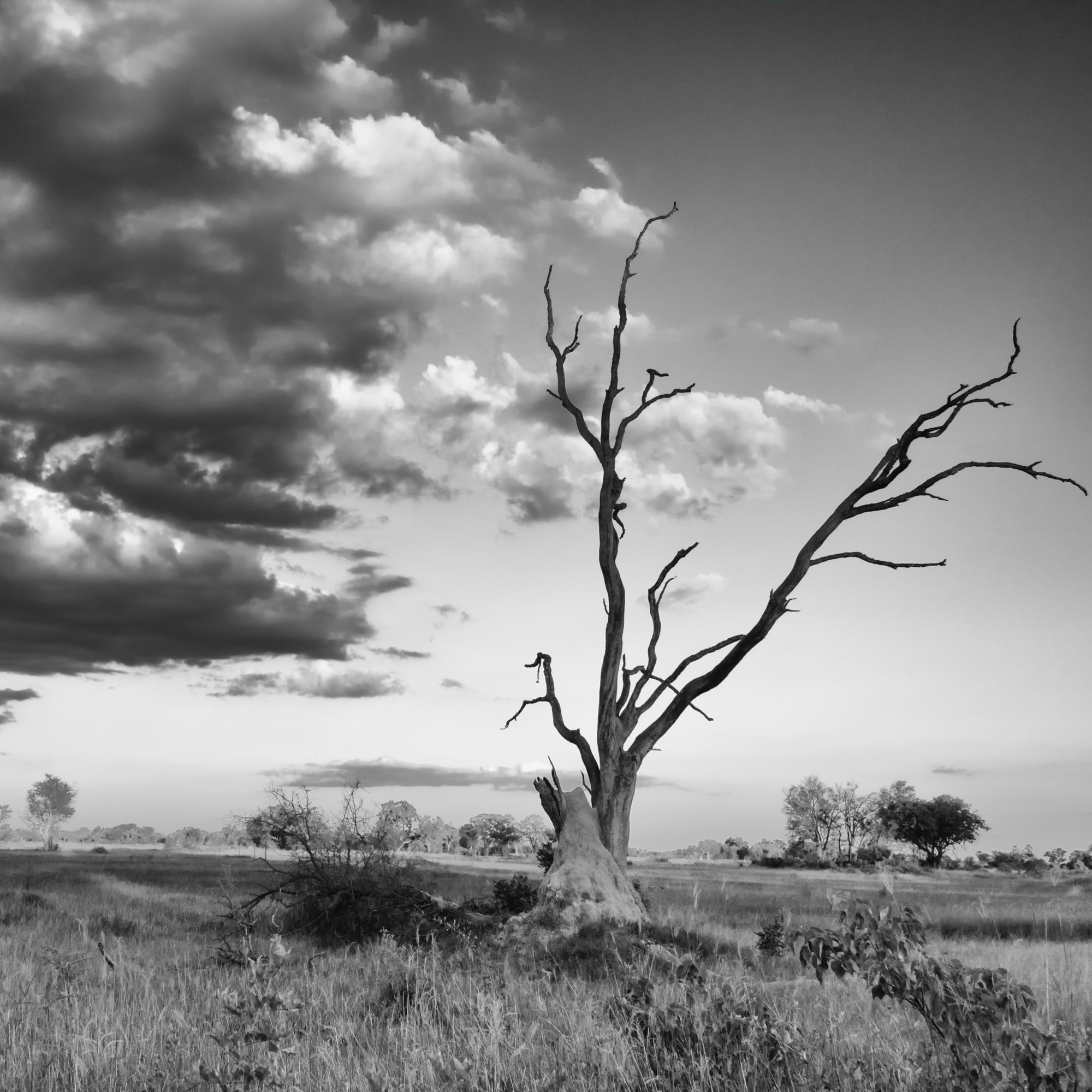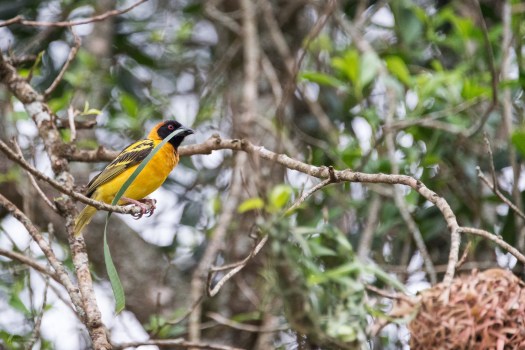



Showcasing the beauty of Mother Nature



I have some bird images that I took on my first trip to Africa, which I printed to fill a frame with 4 – 5″ x 5″ openings. While I see it every day, I haven’t really given it much thought in years. But today when I looked at it, I wondered if with the skills and software I have now, I could improve upon those images.
All of these were shot in raw format with a Nikon D5100 with a 55-300mm kit lens. I did the best I could at the time with editing them, but we all know that software has come a long way in the last 6 years, not to mention there has been a ton of room for improvement in my skills with editing (and still so much to learn).
A lot of these were taken during the harsh light of midday; but when you are out and about, you shoot what you see, when you see it. You never know if you’ll even see the same species of bird again, let alone have another opportunity to photograph it. And as it stands, after 6 trips to Africa, I have only seen carmine bee-eaters on that very first trip while in Zambia, so I am glad I did capture what images I could 🙂
For each image, first is the original edit, and second is the updated edit.








I think in every case, the re-edit made substantial improvement. As soon as I remember to pick up a replacement light magenta ink cartridge for my printer, I am going to reprint these and replace the original images in that old frame.
I have a few other ideas of images I would like to explore from my archive, so watch this space in the coming weeks and months.
Have a great week!
I spotted a barred owl hanging out in the backyard a couple of days ago while I was having lunch. It spent a bit of time trying to hunt, and the rest trying to nap. It was -28C, so I took the photos through my window, as it was just too cold for me to get out to take a couple of pictures. Besides, Murphy’s Law would have kicked in, and by the time I got bundled up enough to head outside and take a few images, the owl would have flown away.
Thankfully things have warmed up a little bit here; still cold, but at least not bitterly cold. I hope your week ahead is looking up too 🙂




I’ve been having fun this weekend working on some of my photo art images, but decided to share a few images of interesting weaver nests today. They caught my eye, and I decided to just go with it.
On my most recent trip, we saw communal nests of the red-billed buffalo weaver and the typical hanging basket style nest of southern masked weaver (that’s my best guess, as we didn’t actually see anyone in residence).


On previous trips I saw several other great examples.








As much as I had hoped that my photo art topic would allow me to get comfortable with Topaz Studio version 2, I haven’t actually even tried it yet. Fingers crossed that this week coming up I can make some time to a watch a tutorial or two and get familiar with the program operation, but for now, I have stuck with the original version, and I am really happy with the results of this weeks experiments.
I decided to focus on birds this week, and played around with two basic combinations of software. The sunbird and hornbill were edited primarily using the Topaz AI Remix module, while the rest were done with Impression (along with the usual basic edits to start for tone, cropping, etc.).
Do you have a favourite this week?
I hope you enjoy, and wishing you a great week ahead.





Travelling through southern Africa, pretty much any time of year, will provide the opportunity to see a great variety of birds. Today I chose to focus on ones with feathers in shades of blue. I hope you enjoy the variety of images today, and wishing you a wonderful weekend!









It seems a little bit strange creating a blog post that doesn’t actually show you what a red-billed quelea looks like up close. I don’t think on any of my trips to southern Africa I have managed to get that type of shot. What I wanted to share with you today was some shots of the stunning murmurations that the quelea display.
These little birds are the most abundant bird species on earth, and many farmers consider them a pest, given the way they can strip a cultivated field in the blink of an eye. I can understand the devastation that they cause when they end up in cultivated areas on mass, but watching them out in the bush against a colourful sunset is an absolute sight to behold (and definitely one worth putting down the sundowner glass of wine, and picking up the camera).
My only regret is I didn’t switch into video mode at any of these sightings; I’ll put that on my to-do list for the next time. 🙂
I hope you enjoy these images, and wishing you a fantastic week ahead.






Everyone that enjoys watching birds and photographing them knows that there are some species that are harder than others to get images of. I love the challenge of trying to capture that elusive clear image of a bird that tends to hide in the densest part of the treetops.
Locally, we have beautiful birds like the Western Tanager; a bird that I have only seen a handful of times, and photographed only on a rare occasion. The incredible yellow plumage on the males makes them targets for predatory birds, so sticking to dense areas makes a lot of sense. I admired the beautiful song of the Hermit Thrush for years before I finally saw a small brown and white bird singing, and had my first clue to discover the identity I had wondered about for so long.
While traveling, I kept up with trying to ID and photograph birds hiding in treetops and thickets. Some were deep amongst the leafy trees foraging for fruits, some were naturally shy and trying hard to stay out of sight, and sometimes, it was just unlucky positioning of the vehicle, and having to shoot through branches and grasses, before the bird flew away.
Here are a few of my shots of some of the more challenging birds spotted on my last trip.










Last week, I featured hornbills for my topic of the month, and this week, it is birds in the dark. I had started typing out birds at night, but one of the images was taken at daybreak, and I thought it best to try and be accurate 🙂
I was very fortunate to have several different owl sightings during my travels, as well as two nightjar sightings. The nightjars were by far the easiest to photograph, as they tend to lay in the road after dark, and if you are lucky you can drive the vehicle fairly close to them and use a spotlight. Owls are a more challenging one, unless you are lucky enough to find them very close to the road, and not spook them when driving up.
This past trip, the first owl sighting I had was on my first evening game drive, and it was rather exciting. I spotted this owl far away on a tree, and as we watched for a few moments, we realized it had a kill it was working on. The terrain made it impossible to drive any closer, so I had to do the best I could with a 400mm lens and a bit of cropping; the quality isn’t fantastic, but the moment was definitely memorable.



I had one eagle sighting while in the Timbavati, of a pearl-spotted owlet, but unfortunately by the time I got the attention of our ranger to stop, the owl was in flight and all I got was a butt shot as it flew away. And not even a decent butt shot; it’s completely blurry and not worth sharing. There’s always next time though 🙂
The rest of the sightings of birds in the dark all came while staying at Chitwa Chitwa with Harley as our guide. Harley really seemed to enjoy pointing out birds, and identifying the ones that I would randomly point at (generally small raptors which I still have a terrible time identifying).
The southern white-faced owl and the spotted eagle owl were seen within about 10 minutes of each other while heading back to camp for dinner; and then the pair of Verreaux’s eagle owls were spotted the following morning as we set off from camp.

Nightjar’s are a common bird to see on game drives at night, but a lot of times they fly away before you have a chance to capture a picture. This past trip, I was fortunate to have two sightings of different species that I could get decent images of.




I hope you enjoy my selections for the week. Wishing everyone a fantastic week ahead!